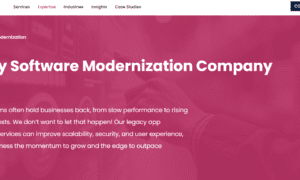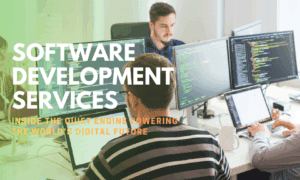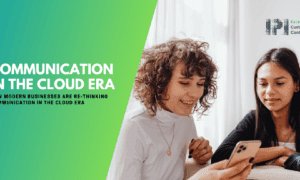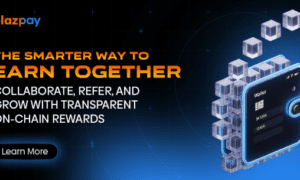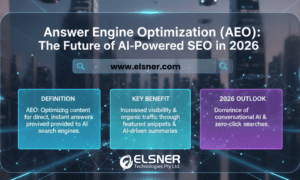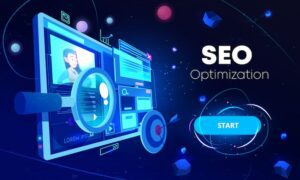In the fast-evolving landscape of global business, procurement has undergone a dramatic transformation—from a back-office, transactional function to a strategic driver of value, innovation, and sustainability. Each wave of evolution has been powered by technology: from the introduction of ERP systems to the rise of e-procurement and automation. Now, a new era is unfolding — Procurement 5.0, where Artificial Intelligence (AI) and autonomous systems are revolutionizing how organizations buy, manage suppliers, and create sustainable value.
Procurement 5.0 isn’t simply about digitization. It’s about intelligence, autonomy, and human collaboration — the seamless integration of AI-driven insights, automation, and strategic decision-making that transforms procurement into a hub of business agility and innovation.
The Evolution Toward Procurement 5.0
To understand Procurement 5.0, it’s essential to see how the function has evolved:
- Procurement 1.0: Manual, paper-based purchasing and supplier negotiations.
- Procurement 2.0: Digitization through ERP and basic e-procurement tools.
- Procurement 3.0: Strategic sourcing and category management emerge.
- Procurement 4.0: Cloud technology, analytics, and robotic process automation (RPA) enable efficiency.
- Procurement 5.0: The current era—powered by AI, machine learning, predictive analytics, and agentic automation—where procurement systems think, learn, and act.
This new phase marks a shift from reactive, rules-based automation to proactive, autonomous intelligence. AI doesn’t just process transactions; it predicts risks, optimizes spend, and even initiates sourcing actions without human intervention.
AI: The Engine of Procurement 5.0
At the heart of Procurement 5.0 lies AI — transforming every stage of the Source-to-Pay (S2P) cycle. From spend analysis to supplier management, AI brings intelligence, adaptability, and speed to previously manual or static processes.
Let’s explore how AI is redefining key procurement functions:
1. Spend Analysis and Insights
In traditional procurement, data was scattered across systems, making spend visibility limited and often retrospective. AI enables real-time, predictive spend intelligence, aggregating data from multiple sources to identify patterns, savings opportunities, and potential risks.
AI-driven platforms can classify spend data automatically, uncover inefficiencies, and recommend smarter sourcing strategies. This empowers organizations to manage budgets strategically rather than reactively.
2. Supplier Discovery and Risk Management
Globalization has expanded supply networks but also introduced new layers of complexity and risk. AI systems can continuously scan millions of data points—financial reports, ESG ratings, geopolitical events, and news feeds—to evaluate supplier stability and compliance.
By leveraging predictive analytics, procurement teams can anticipate disruptions before they occur and diversify supplier portfolios proactively. AI even suggests alternative suppliers based on sustainability metrics, cost, and performance history—enabling more resilient and ethical sourcing.
3. Autonomous Sourcing and Negotiation
Procurement 5.0 is defined by autonomous sourcing, where AI agents handle routine supplier negotiations, tendering, and contract management.
Imagine AI systems that can automatically:
- Identify sourcing needs based on forecasted demand,
- Invite and evaluate supplier bids,
- Negotiate terms based on pre-set business rules, and
- Generate draft contracts aligned with company policy.
This level of automation allows procurement professionals to focus on strategic supplier partnerships and innovation, rather than repetitive administrative work.
4. Intelligent Contract Lifecycle Management
Contracts are the lifeblood of procurement, but managing them manually is error-prone and time-consuming. AI-driven contract lifecycle management (CLM) tools can extract key terms, monitor compliance, and flag risks automatically.
By integrating natural language processing (NLP), AI can read and understand legal clauses, ensuring alignment with internal governance and regulatory standards. In the Procurement 5.0 world, contracts become living documents — continuously monitored and optimized by AI.
5. AI-Powered Supplier Collaboration
Supplier relationships are shifting from transactional to collaborative. AI facilitates this shift through data transparency and real-time performance tracking. Both buyers and suppliers can access dashboards showing on-time delivery rates, carbon emissions, and quality scores.
AI chatbots and intelligent assistants simplify communication, providing instant responses to supplier queries or automatically updating records. This enhances trust and fosters mutual growth across the supply ecosystem.
From Automation to Agentic Intelligence
The most exciting leap in Procurement 5.0 is the rise of Agentic AI — intelligent systems capable of making independent decisions and executing tasks across the procurement lifecycle.
Unlike traditional AI that provides recommendations, Agentic AI acts. It can:
- Detect anomalies in spend and initiate corrective workflows.
- Trigger re-sourcing activities when supplier risk thresholds are breached.
- Rebalance purchase volumes across vendors to optimize cost and risk.
This autonomy transforms procurement from a reactive function to a self-managing ecosystem that operates continuously, learning and improving with every transaction.
Enterprises adopting these capabilities are seeing a shift toward autonomous procurement, where systems don’t just support decision-making — they drive it.
Sustainability and ESG Integration
Procurement 5.0 also brings sustainability into sharper focus. AI systems can integrate ESG (Environmental, Social, Governance) metrics directly into sourcing decisions. By evaluating supplier data on emissions, waste management, and labor practices, AI ensures that procurement aligns with organizational sustainability goals.
When a supplier fails to meet ESG benchmarks, AI agents can automatically suggest alternatives or initiate corrective action. This ensures that sustainability is no longer an afterthought but an inherent part of every purchase decision.
Leading technology providers like Zycus are pioneering AI-powered procurement platforms that combine automation, intelligence, and sustainability to help enterprises achieve end-to-end digital transformation. By integrating cognitive technologies, organizations can make procurement both efficient and ethically responsible.
Empowering Human + Machine Collaboration
Procurement 5.0 isn’t about replacing people — it’s about amplifying human capability. AI takes over repetitive, data-heavy tasks, allowing professionals to focus on strategy, innovation, and relationship management.
Procurement teams of the future will act as decision orchestrators, leveraging AI-generated insights to guide business strategy, manage supplier ecosystems, and deliver measurable impact.
The new procurement professional must blend analytical thinking with creativity — understanding how to interpret AI recommendations while driving human-centered innovation.
Overcoming Barriers to AI Adoption
Despite its promise, the path to Procurement 5.0 comes with challenges. Key barriers include:
- Data fragmentation: Poor data quality limits AI accuracy.
- Change management: Teams must be upskilled to trust and collaborate with AI systems.
- Integration complexity: AI tools must connect seamlessly with ERP, finance, and supplier systems.
- Governance: AI decision-making must be transparent, auditable, and aligned with corporate ethics.
Successful adoption requires a clear roadmap — starting with data consolidation, followed by automation, predictive analytics, and finally, the integration of autonomous agents.
The Future of Procurement Is Cognitive and Connected
As businesses continue to digitize, procurement will become the central nervous system of enterprise value creation — connecting suppliers, sustainability goals, and strategic priorities.
Procurement 5.0 represents not just an upgrade, but a reinvention. AI empowers organizations to anticipate change, adapt instantly, and make procurement a proactive force for business growth and responsibility.
In the coming years, procurement teams will rely on a hybrid model of agentic intelligence and human insight, where systems handle the complexity and humans steer the strategy.
This new era will define the leaders of tomorrow — those who understand that in Procurement 5.0, intelligence is not just artificial; it’s actionable, autonomous, and transformative.


